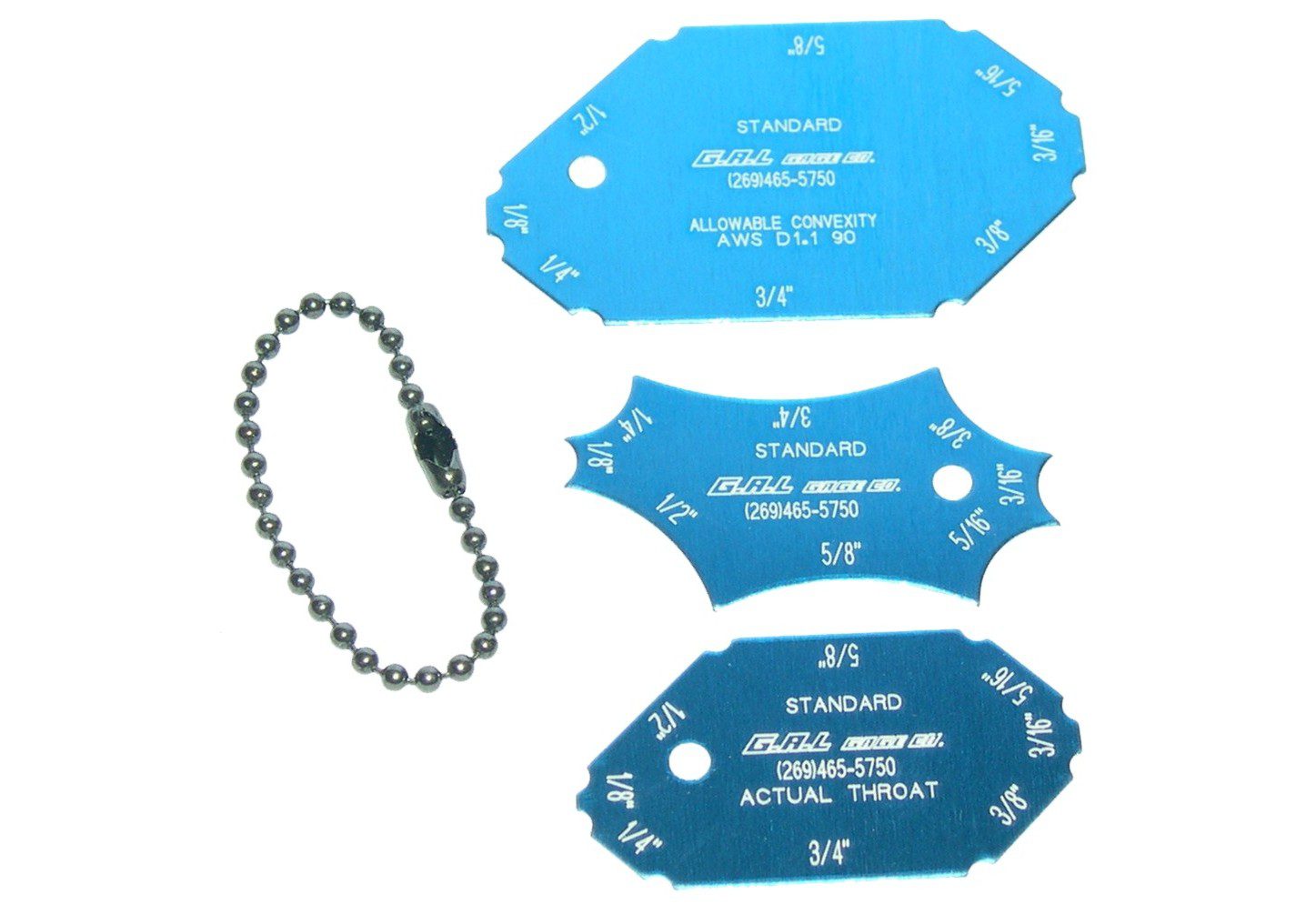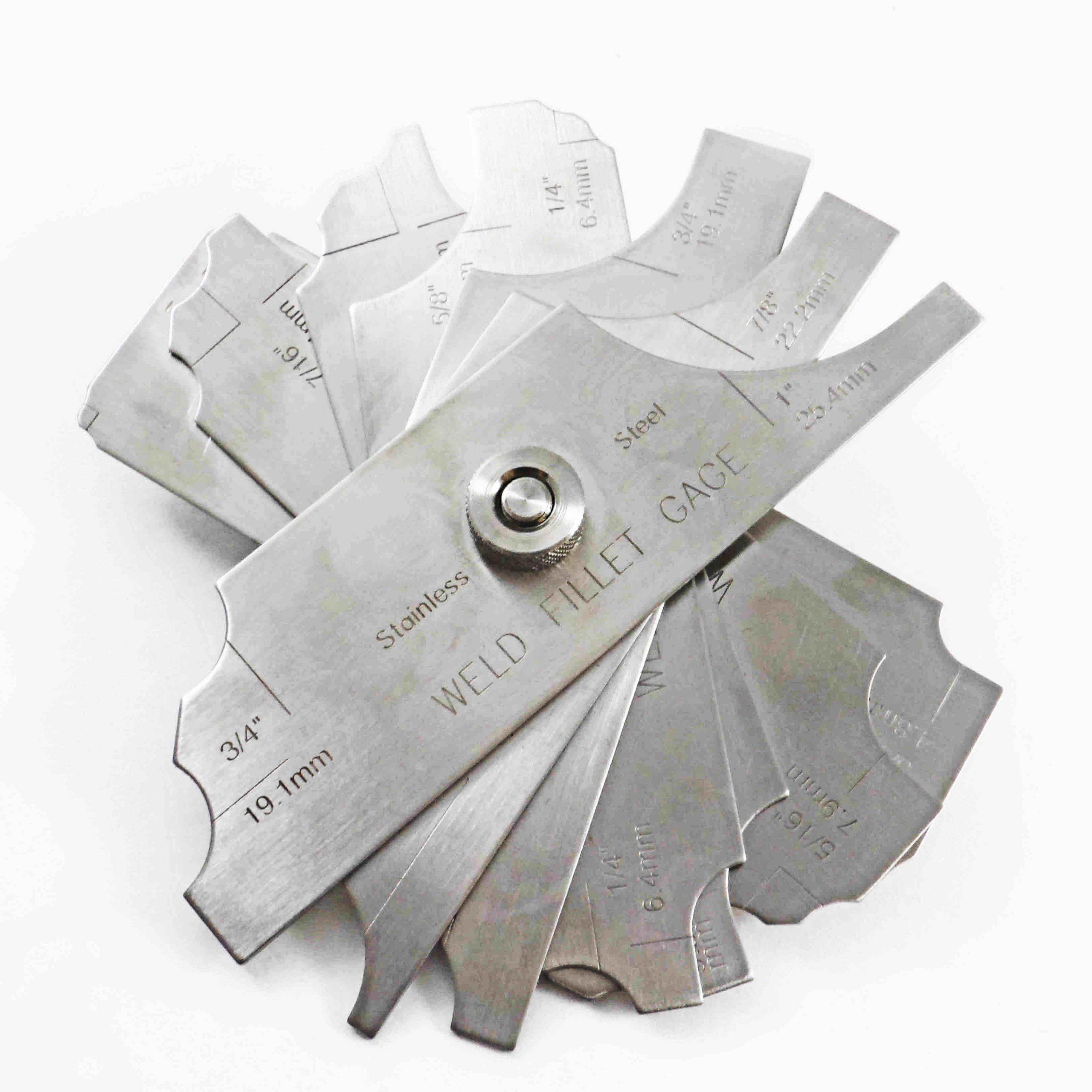Cutting-edge Methods to Fillet Weld Inspection and Testing: Enhancing Weld Top Quality and Compliance Standards
In the world of welding, the quality and honesty of fillet welds play a crucial role in making sure the structural strength and reliability of various commercial elements. With the constant drive for improved efficiency and compliance with rigorous standards, the exploration of cutting-edge approaches to fillet weld examination and screening has actually ended up being important. As sectors evolve, the conventional techniques might no more suffice in fulfilling the demands of contemporary welding applications (Gauge Fillet Weld). By accepting innovative technologies and approaches, a brand-new horizon of possibilities arises in the realm of weld quality evaluation and adherence to compliance standards.
Advanced Non-Destructive Screening Techniques
Using modern modern technologies, advanced non-destructive screening approaches play a critical role in ensuring the integrity and top quality of fillet welds. These methods, such as phased variety ultrasonic testing (PAUT) and magnetic bit screening (MPT), offer thorough understandings into the weld's internal structure without creating any damage to the product. PAUT, as an example, utilizes multiple ultrasonic aspects to check the weld from numerous angles, giving a detailed visualization of potential problems like lack of combination or splits.
In A Similar Way, MPT is effective in spotting surface-breaking issues by using an electromagnetic field and iron bits to the weld area. This method is especially beneficial for recognizing suspensions that may compromise the weld's stamina. By using these sophisticated non-destructive testing techniques, weld assessors can properly evaluate the quality of fillet welds, making certain conformity with sector criteria and guidelines. The ability to find defects beforehand not just boosts weld quality however likewise stops costly rework or failures in architectural stability, underlining the value of these innovative screening strategies in welding evaluations.
Robotics and Automation in Inspection

The assimilation of robotics and automation has revolutionized the assessment procedure for fillet welds, enhancing effectiveness and accuracy in top quality analysis. Robotics provide precise control and repeatability in checking welds, ensuring regular and reputable outcomes. Automated systems can be programmed to adhere to particular inspection paths, making sure extensive protection of welds and lowering the danger of human mistake.
Robot examination systems equipped with sophisticated sensing units can spot and measure weld attributes with high accuracy, supplying detailed information for analysis. These systems can determine flaws such as cracks, absence of fusion, and porosity, enabling timely restorative activities to be taken. Furthermore, robotics and automation allow for real-time information collection and analysis, supplying immediate feedback to operators and helping with quick decision-making procedures.
In addition, the use of robotics and automation in fillet weld assessment improves general efficiency by decreasing assessment times and raising evaluation throughput. By improving the evaluation process, producers can guarantee weld high quality and conformity standards are fulfilled efficiently, ultimately causing set you back financial savings and boosted product top quality.
Using Artificial Intelligence for Evaluation
Synthetic knowledge plays a critical duty in boosting the performance and accuracy of analysis in fillet weld assessment procedures. By harnessing the power of AI, assessors can streamline the evaluation of weld top quality and compliance criteria, leading to extra trusted and precise results. AI algorithms can swiftly refine huge quantities of data from weld inspections, finding issues or incongruities that may be challenging to understand the nude eye. This innovative modern technology allows real-time surveillance of weld high quality, permitting instant rehabilitative activities to be taken if any kind of concerns are detected.
Additionally, AI systems can pick up from past assessment information, continually boosting their capacity to identify potential flaws and discrepancies in fillet welds. This flexible learning capacity enhances the overall quality assurance process, decreasing the likelihood of human mistake and guaranteeing that welds meet the required requirements. By integrating artificial knowledge into fillet weld evaluation, sectors can accomplish higher degrees of performance, consistency, and conformity in their evaluation methods.
Portable Equipment for On-Site Evaluation
Enhancing area examination performance, the adoption of portable devices reinvents on-site assessment processes for fillet welds. These devices offer versatility and convenience, allowing inspectors to perform extensive assessments in different areas, consisting of remote or challenging settings. Portable tools such as ultrasonic testing gadgets, magnetic bit evaluation equipment, and electronic radiography systems supply real-time data and high-resolution imaging capabilities, allowing quick decision-making and immediate comments on weld top quality.
One considerable advantage of mobile tools is their capability to streamline evaluation treatments, reducing downtime and improving overall performance - Gauge Fillet Weld. Inspectors can quickly deliver these devices to various task websites, eliminating the requirement for official website transferring heavy equipment or parts to off-site facilities. Additionally, the transportability of these devices advertises cost-effectiveness by lessening transport expenses and accelerating evaluation timelines
In addition, the usage article source of portable devices for on-site inspection advertises positive quality assurance steps, as inspectors can quickly identify and deal with any kind of potential welding defects or discrepancies. By integrating these innovative technologies into on-site evaluation methods, welding experts can guarantee conformity with market criteria and enhance weld high quality, eventually causing boosted structural integrity and safety and security in different welding applications.
Integration of Information Management Equipment

Having actually maximized on-site assessment processes through the use of mobile devices, the next phase entails the smooth assimilation of data monitoring systems to further improve efficiency and information evaluation capabilities in fillet weld evaluation and screening. By incorporating information monitoring systems right into the examination process, organizations can simplify information collection, storage space, and analysis. This assimilation enables for real-time tracking of weld quality, immediate identification of defects, and timely decision-making to correct any kind of concerns that may arise throughout the inspection process.
The integration of data monitoring systems enables smooth interaction in between different stakeholders included in the assessment process, promoting collaboration and improving general quality control steps. Eventually, the combination of data administration systems serves to boost the standards of fillet weld assessment and screening, guaranteeing compliance with industry policies and enhancing weld high quality.
Conclusion
To conclude, innovative approaches to fillet weld inspection and screening have dramatically boosted weld high quality and compliance standards. Advanced non-destructive screening approaches, robotics, automation, artificial intelligence, mobile tools, and information management systems have transformed the method weld evaluations are conducted. By utilizing these technologies, sectors can make sure that welds meet the required quality requirements and regulations, eventually look at here improving general effectiveness and security in welding processes.

Having maximized on-site assessment processes through the use of mobile tools, the following phase entails the smooth combination of data management systems to further enhance performance and data analysis capabilities in fillet weld inspection and screening. Eventually, the assimilation of data monitoring systems offers to elevate the standards of fillet weld evaluation and screening, making certain conformity with industry guidelines and improving weld quality.

Comments on “The Role of Gauge Fillet Weld in Structural Integrity: What You Required to Know”